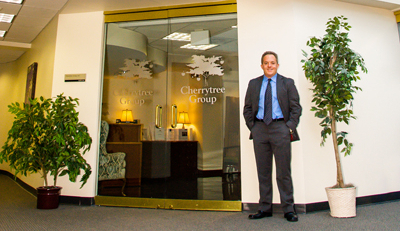Over the past 12 months, The Cherrytree Group helped investors and developers identify ideal opportunities for safe, stable growth.
Where did the year 2019 take us at the Cherrytree Group? Well, we made our first forays into states in the Southeast and Midwest — and closed on our first hybrid historic-low income housing tax credit deal.
Our 2019 projects were distributed all over the United States:
• Harlem, New York
• Manchester, Connecticut
• Boston and Worcester, Massachusetts
• Kennesaw Georgia
• Groveland, Florida
• Shelbyville, Indiana
No matter where today’s forward-thinking real estate professionals and investors are located, they all share a need to manage their projects and investments as productively and smartly as possible. And when their projects — in one way or another — benefit the public good, those needs for efficiency only increase.
In this past year, the Cherrytree team was able to able to deploy much-needed tax credit equity to dozens of projects that:
• provided affordable rental apartments to low-income families
• generated solar energy
• restored historic buildings
• remediated contaminated properties.
We are proud of the work that we did in 2019; the benefits which were bestowed on the affected communities and the positive impact to both private and public sectors: from the savings that taxpayers earn to the increased economic output and residual revenue generation enjoyed by local, state, and federal government from completed tax credit projects.
Our firm was also firmly entrenched in structuring and introducing our inaugural Opportunity Zone Fund, which we believe is one of the very few remaining investment vehicles to defer capital gains taxes, organically engineer the payment of the deferred taxes using tax credits, tax losses and accrued cash flow, while securing the ability to generate tax-free appreciation from a core real estate asset.
Recognition of our achievements came from many sources:
In January our project in Lowell, Massachusetts was featured by several publications, including Commercial Property Executive.
The month of May saw a variety of articles nationwide about our own award-winning restoration of the Cherrytree offices, using available tax credit programs.
In July, our tax credit backed project in Springfield, Massachusetts was featured in numerous publications.
By October the influential Boston Business Journal had featured our work within the federally backed Opportunity Zone program for a spotlight feature story. As word spread throughout the investment and development communities about the advantages of Opportunity Zone developing and investing, more and more news organizations were tackling the subject and relying on Cherrytree as a source.
And in November our project in Indiana attracted quite a bit of local notice, from radio interviews to newspaper stories. Those are some examples of the “public face” of The Cherrytree Group. Behind the scenes, in 2019 we:
• grew our knowledge base and adapted to a changing regulatory environment
• improved our internal systems and processes
• built the foundation for a business that has the ability to serve its constituency of clients in a true value-added manner.
These are all measures which should assist our clients even more with their investing or developing programs in 2020 and beyond.
As we work from our authentically renovated historic building near Boston, we feel 2019 was transcendent in building our foundation and establishing The Cherrytree Group as a resource for small- to medium-sized tax credit projects as well as a valuable asset to non-institutional tax incentivized investors. We intend to approach 2020 with a laser focus on serving our core constituencies.

Warren founded Cherrytree in 2011 and has spent the past eleven years building a highly specialized tax credit consultation, brokerage, and syndication firm. He has relied on three decades of experience and a law background to focus on the structural and development finance aspects of tax incentivized real estate-based transactions — particularly in the environmental remediation (Brownfields), renewable energy, and historic rehabilitation areas.


